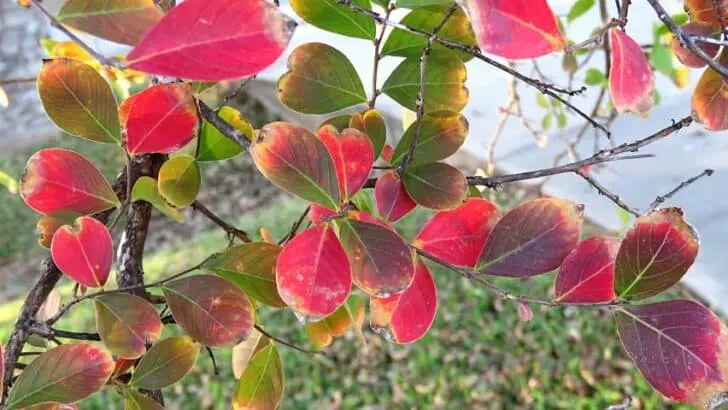Crepe Myrtles are beautiful trees that adorn any neighborhood with dazzling splashes of summery color from June through August, offering blooms in pink, purple, red, and white according to the University of Georgia.
As trouble-free as they are to grow and maintain, though, crepe myrtles can still run into problems.
In this article, I will deal with the difficulties that lead to crepe myrtle leaves curling.
Table of Contents
Crepe Myrtle Leaves Curling
Crepe Myrtle’s leaves curl because of damage from chemicals, problems with the plant’s environment, problems with the nitrogen amount in the soil, and attacks from pests or viruses.
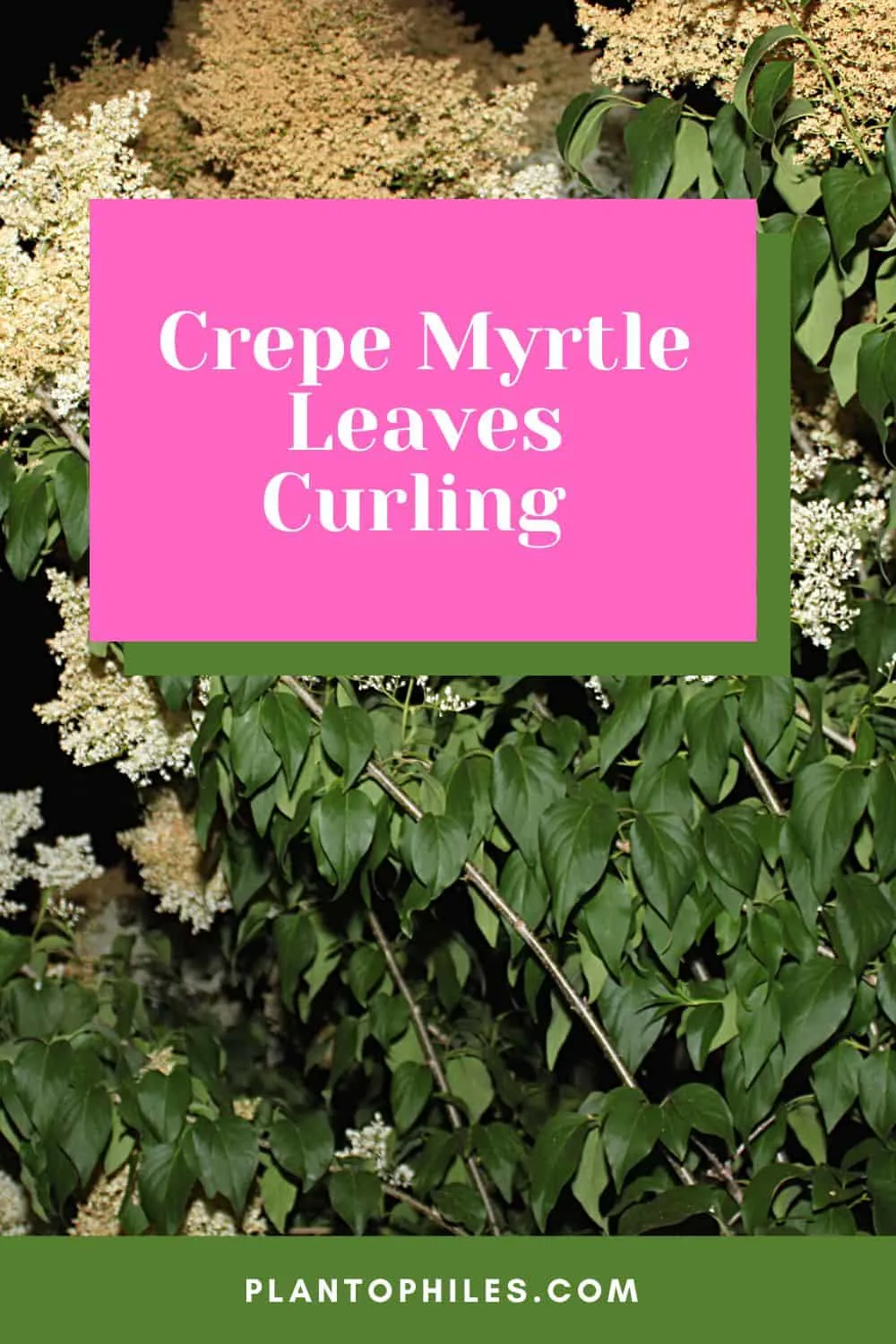
1. Damage from Chemicals on Crepe Myrtles
The main chemical damage to crepe myrtle comes from the misuse of weed killers (herbicides).
Of course, no gardener wants weeds attacking their precious shrubs and trees, so the urge to fix their weed issues with something as straightforward as a chemical spray seems appealing.
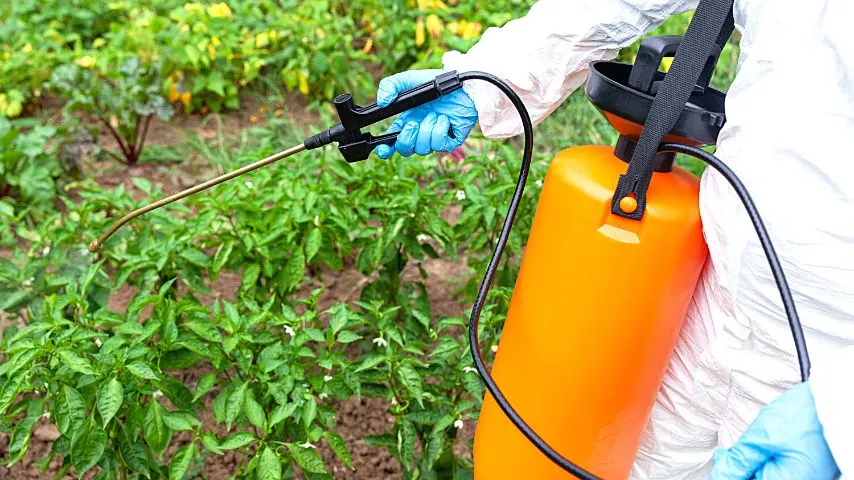
The trouble comes when the herbicide creates more problems than it solves.
The active ingredient in many herbicides causes a chemical burn in crepe myrtle leaves, affecting their ability to process water correctly. In turn, this destroys the leaves’ cell structure, weakening the foliage and possibly threatening the plant’s life.
Controlling this chemical damage is a matter of avoidance so that you don’t get into a mess in the first place. You can do this by being careful when applying weed killer anywhere near crepe myrtle to not allow any of the herbicide to get onto the leaves of the tree/bush.
If you are putting weed killer on the ground, keep in mind that roots spread out a long way, so although you might think you are far away enough from the trees, you might not be.
At any rate, as a good safeguard, only buy and use herbicides that don’t have ingredients that activate in soil.
2. Problems with the Crepe Myrtle’s Environment
Although crepe myrtle is an easy tree to look after, it still demands the proper environmental conditions, or it will suffer and not do well.
When things like heat, water, and light occur in the wrong quantities, the plant will display its distress mainly by showing curling leaves.
Normally, this change in the shape of its leaves will come along with a shift in color to yellow or, in extreme cases crepe myrtle leaves turn brown.
From experience, I would say that the typical stress condition affecting crepe myrtle has to do with water–either too much or too little.
Regardless of whether your tree or shrub is overwatered or underwatered, visually, you will get the same cue from the plant. Crepe myrtle leaves will curl inwards to protect themselves from further water loss and damage.
If you find it surprising that leaves will curl inwards to stop a loss of water even when the plant is overwatered, it is because overwatering has the odd effect of preventing the plant’s roots from properly absorbing water.
Essentially, the plant dies of thirst due to too much water!
Another but less common stressor is heat or too much sunlight. Whether getting too hot or too much light, you must treat the plant when its leaves start to curl or even drop off, although, once again, avoidance is the best strategy.
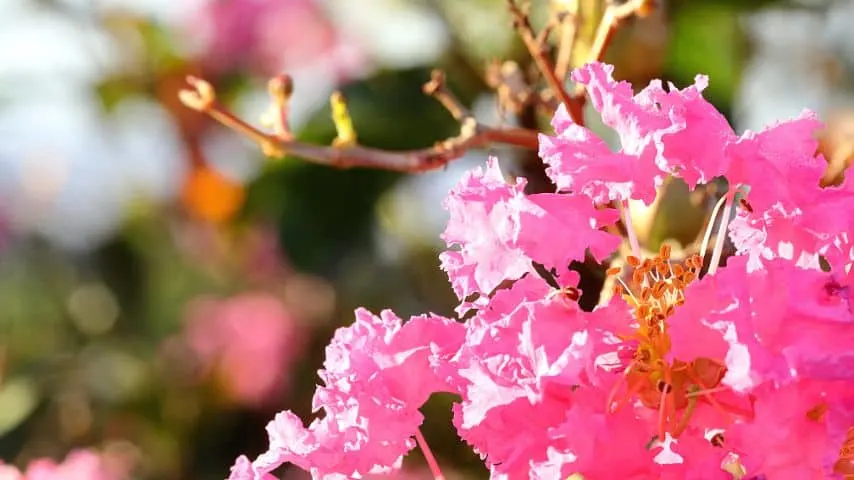
Plant crepe myrtle where it won’t get too much sunlight. I’d consider planting the tree/shrub to one side or corner that is naturally shaded in the afternoon.
During a heatwave, help the plant deal with the heat by carefully pruning its branches to allow for extra airflow.
3. The Crepe Myrtle has Problems with the Nitrogen Amount in the Soil
The right nitrogen amount in the soil is crucial for crepe myrtle. Too little nitrogen and the plant’s leaves turn brown (without first turning yellow), curl up, dry, and drop off.
You will get a massive hint here because, at first, it will be the older leaves that go through this process.
With too much nitrogen, the plant’s older leaves turn yellow, curl downward, and dry out. New leaves turn an intense shade of green and curl rolled up.
To deal with either condition, use a fertilizer with a balanced NPK ratio, as a short-term solution. However, in the long term, plant crops that fix nitrogen, for instance, beans or peas.
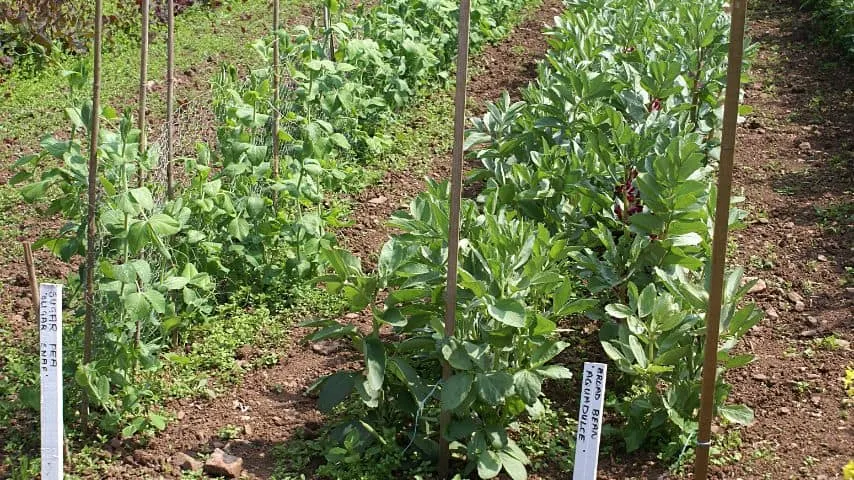
If you don’t like planting crops for the sake of ornamental plants (I don’t), use compost manure instead of fertilizers for long-term treatment.
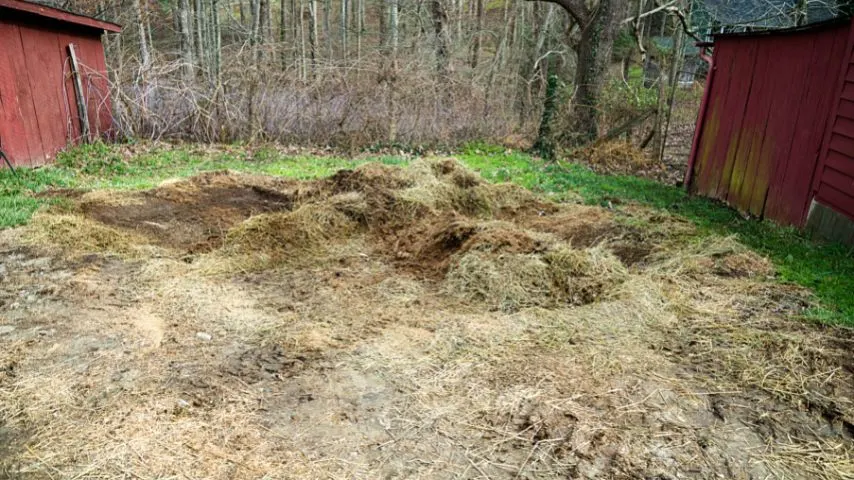
4. Attacks from Pests or Viruses on Crepe Myrtles
It is easier to deal with pest attacks on crepe myrtle than viruses. Pests like thrips, whiteflies, aphids, and spider mites suck the sap out of the tree, causing the crepe myrtle leaves to turn yellow, wrinkle, and wither.
Unlike when other issues affect your tree or shrub, the attack of pests or viruses causes leaves to curl unevenly, giving you an instant clue about what is happening.
To confirm your suspicions, inspect the plant in the case of pests, and you should see fluff, dirt, or spiderwebs, especially under leaves and along stems close to wear the leaves sprout.
Viruses, as I mentioned earlier, are harder to deal with. I always say that for crepe myrtle, it is best to approach nearby nurseries because they will have built up a body of knowledge on common local viral problems and perhaps even have a workable solution for you.
Plant petunias near crepe myrtle to attract harmful pests away from the trees. Petunias are hardy, and you will be able to deal more easily with nuisances on them than on crepe myrtle.
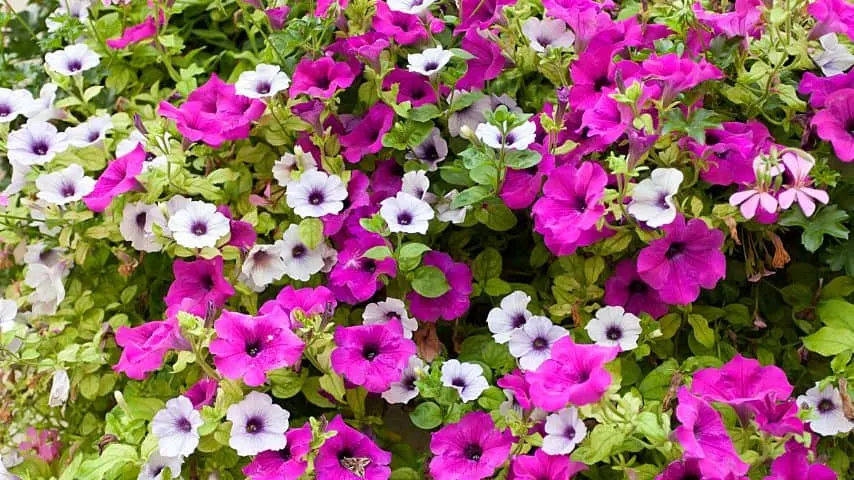
Although crepe myrtles seldom trouble gardeners, things can go wrong. One of the first signs of trouble is usually when the plant’s leaves curl, often accompanied by a change of color.
The direction of the curl – whether inward, upward, outward, or downward – can give you a clue about the underlying problem.
Frequently Asked Questions about Crepe Myrtle Leaves Curling
Is it true that contaminated water can damage my Crepe Myrtle and make its leaves change color, curl and fall off?
Unfortunately, Crepe Myrtle is particularly sensitive to polluted water, but identifying the pollutant can be tricky. If your tree’s leaves have curled, turned yellow, then brown, and then fallen off, water pollution is affecting the plant. Approach your local nursery or university’s botany department for help.
Do curling leaves mean my Crepe Myrtle will die, or can I still save it?
Curling leaves do not mean your Crepe Myrtle is lost! It is best to avoid some Crepe Myrtle problems rather than have to try to treat them later, but many of the causes of drooping leaves are often relatively easy to fix. Seek help before you destroy the tree just because it has curling leaves.
Conclusion Crepe Myrtle Leaves Curling
Crepe myrtle leaves are curling because of the following reasons:
- Chemical damage
- Environmental problems
- Nitrogen issues in the soil
- Pests and viruses

Daniel has been a plant enthusiast for over 20 years. He owns hundreds of houseplants and prepares for the chili growing seasons yearly with great anticipation. His favorite plants are plant species in the Araceae family, such as Monstera, Philodendron, and Anthurium. He also loves gardening and is growing hot peppers, tomatoes, and many more vegetables.

